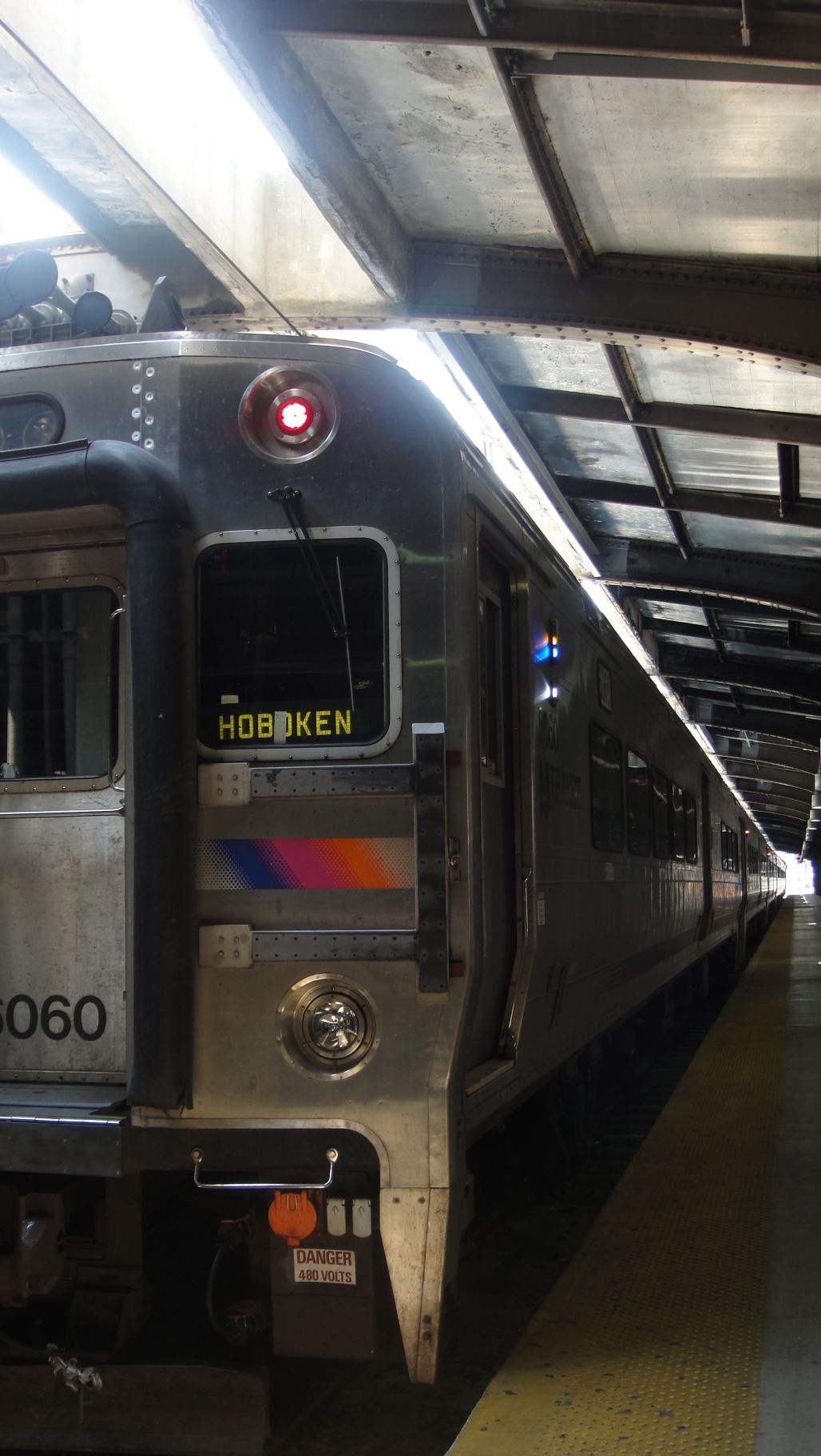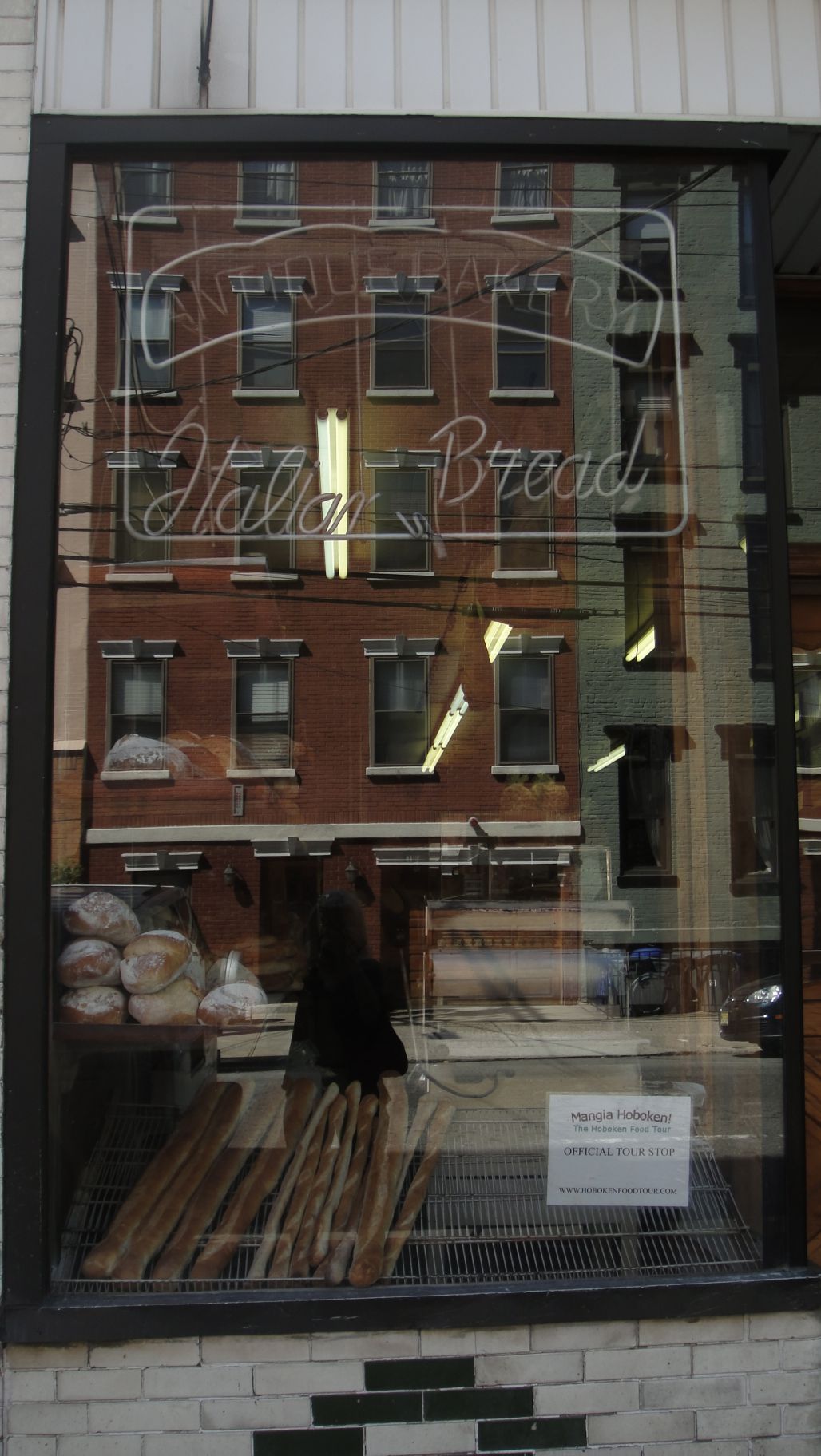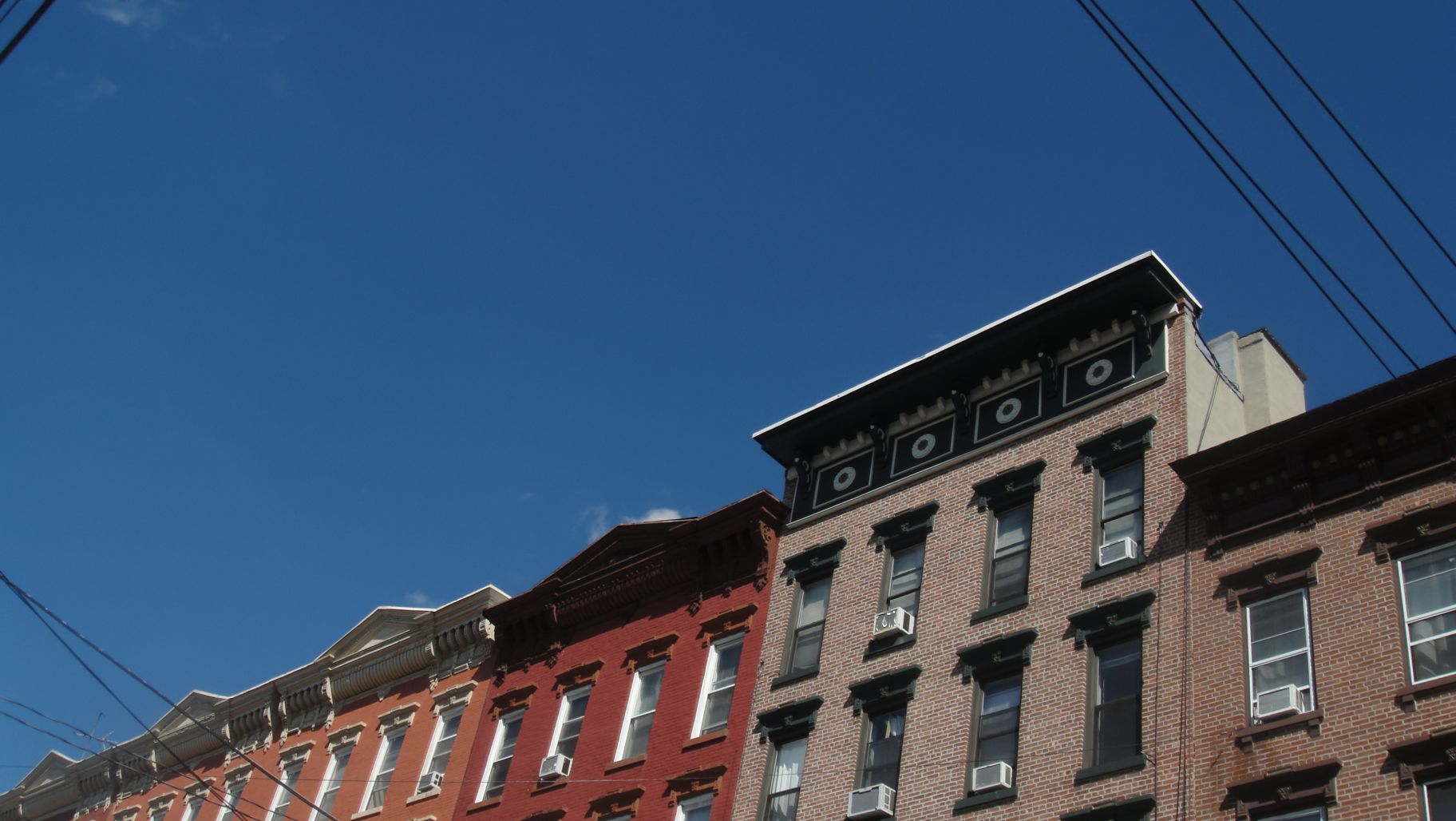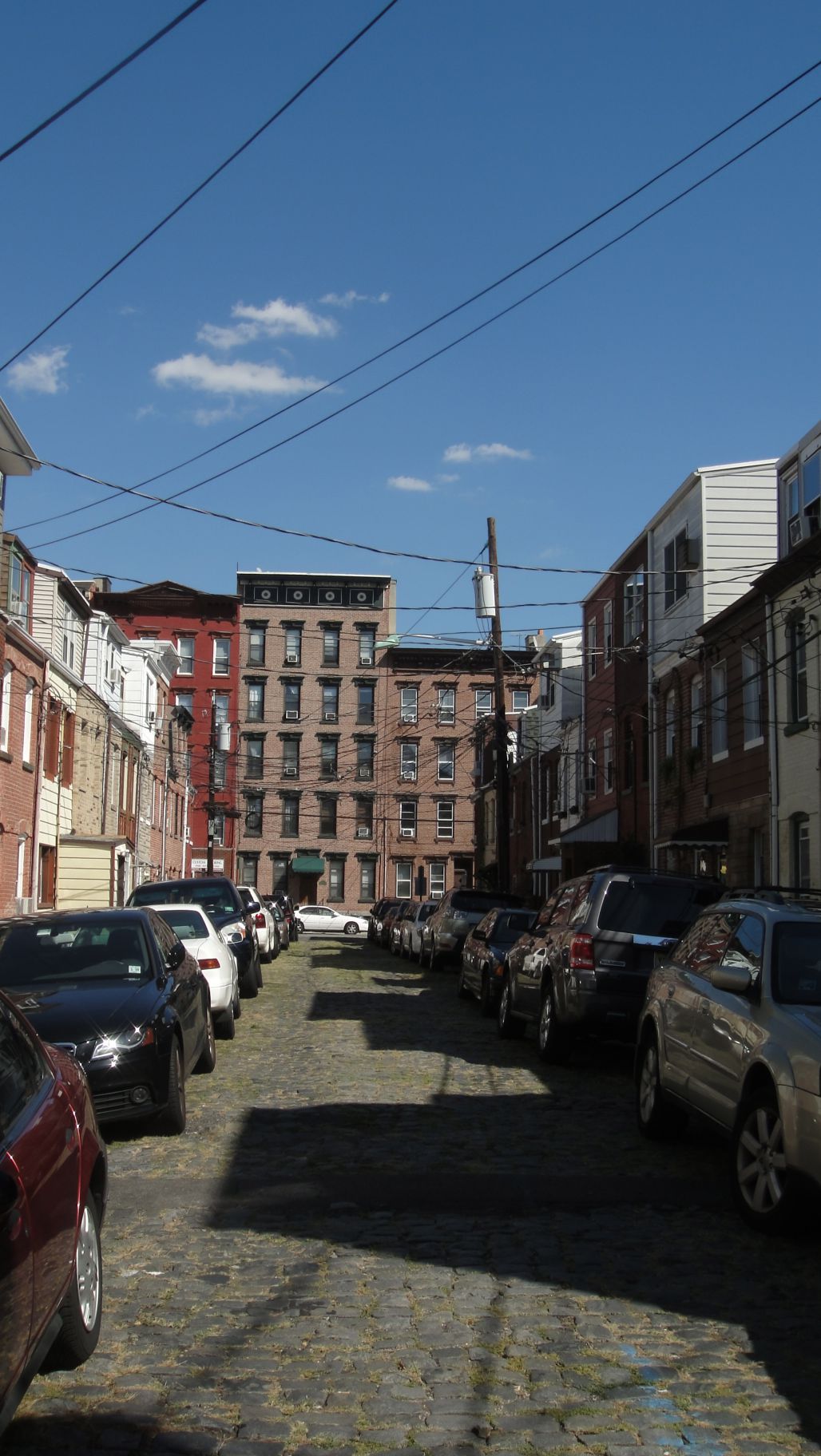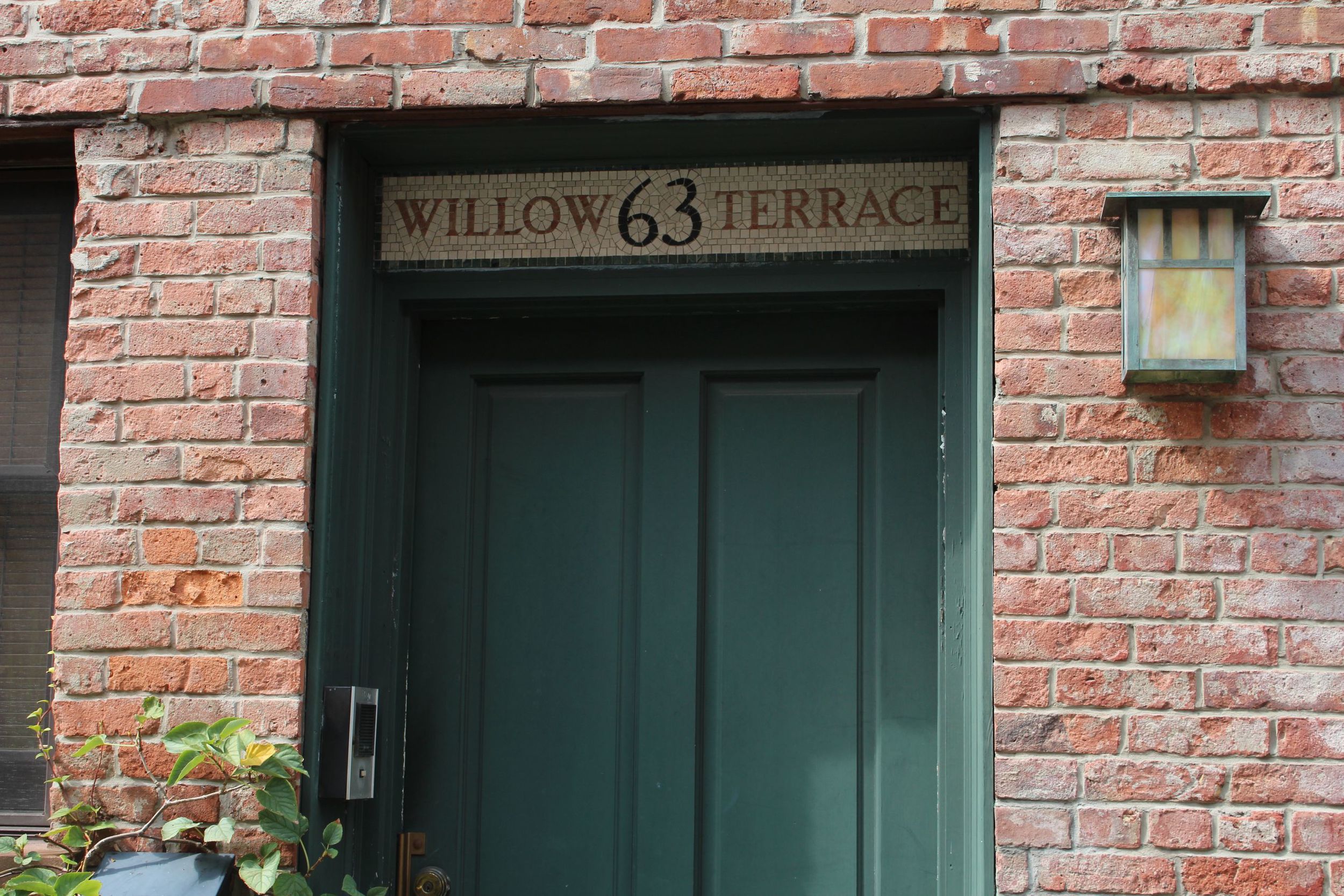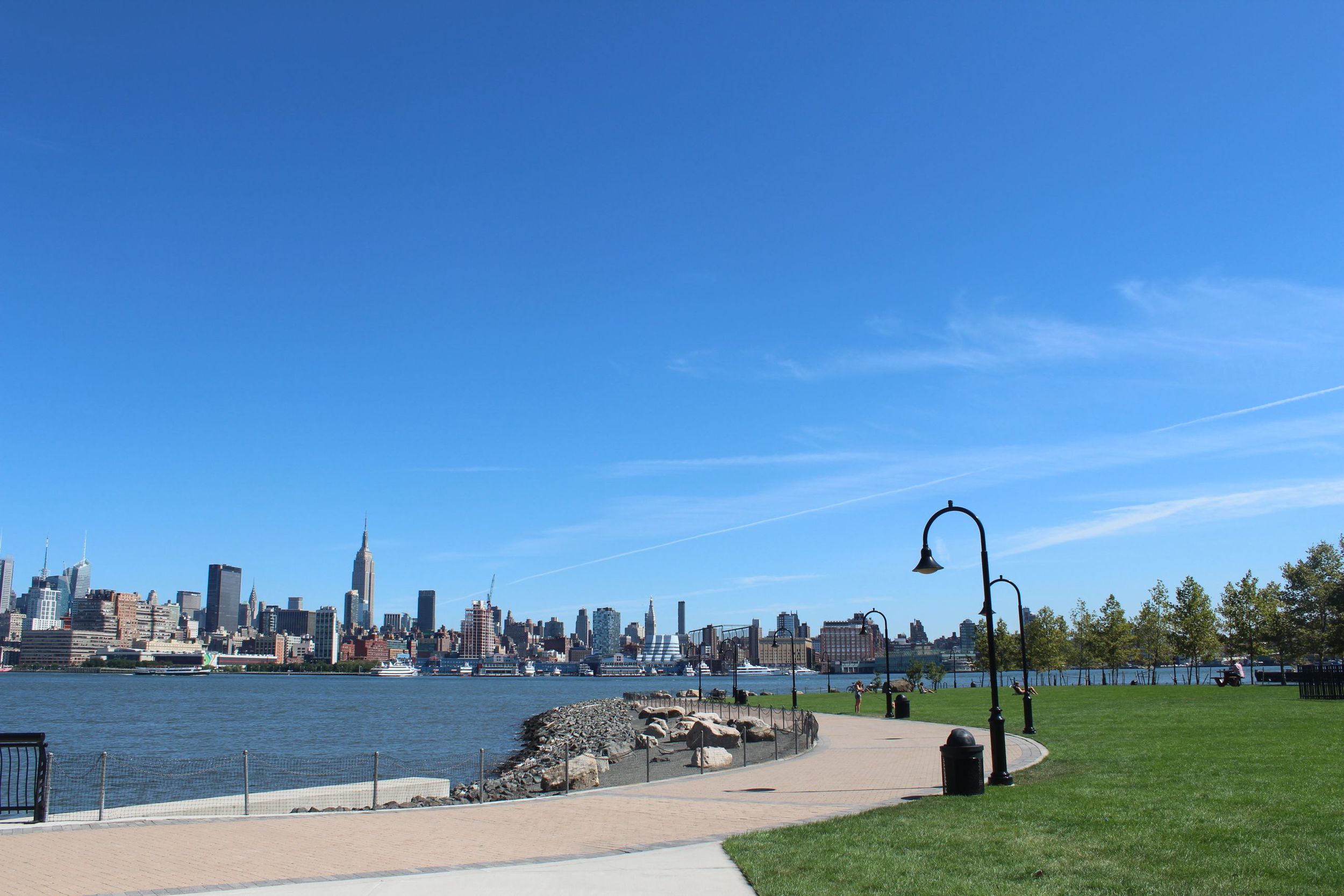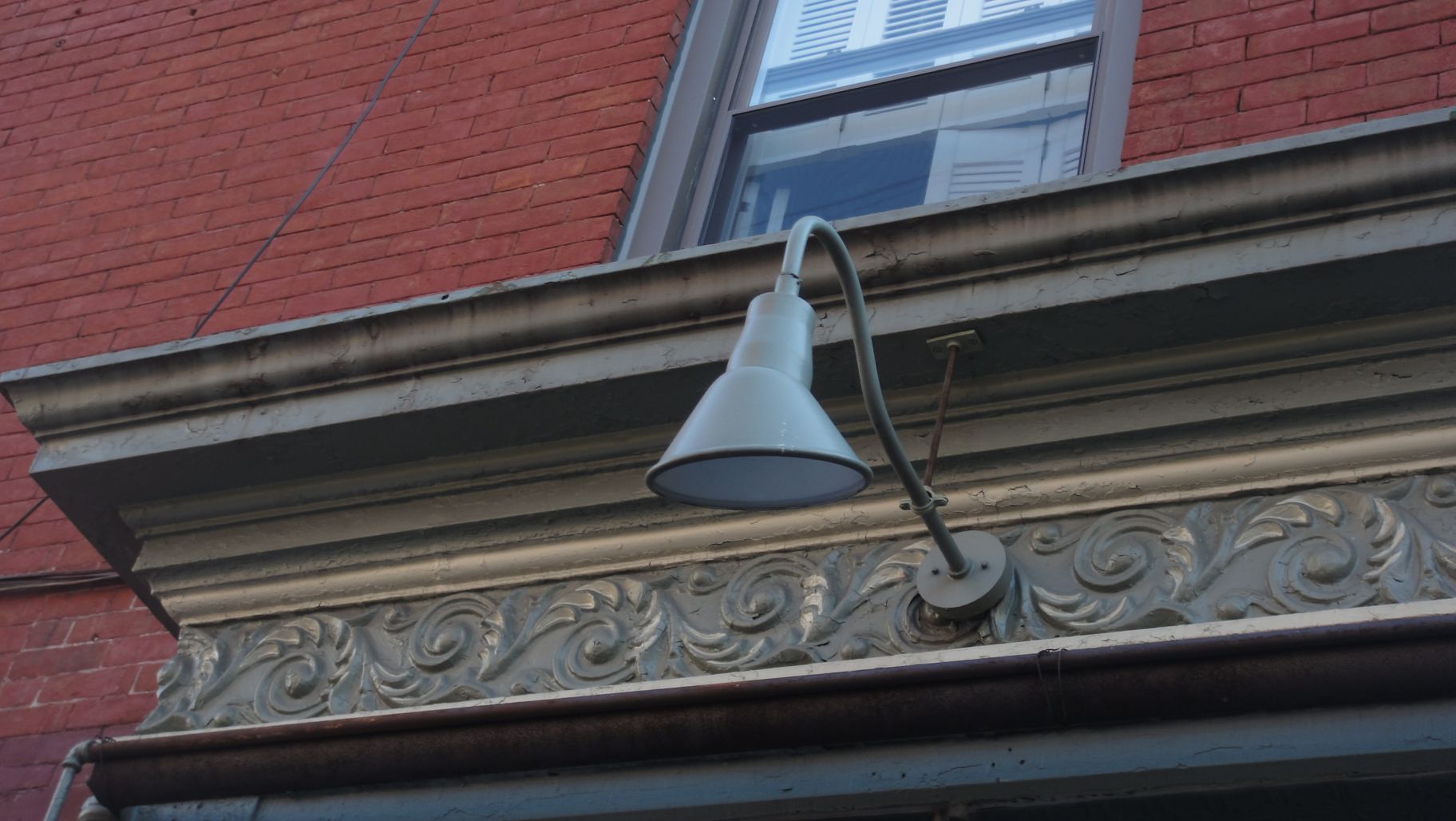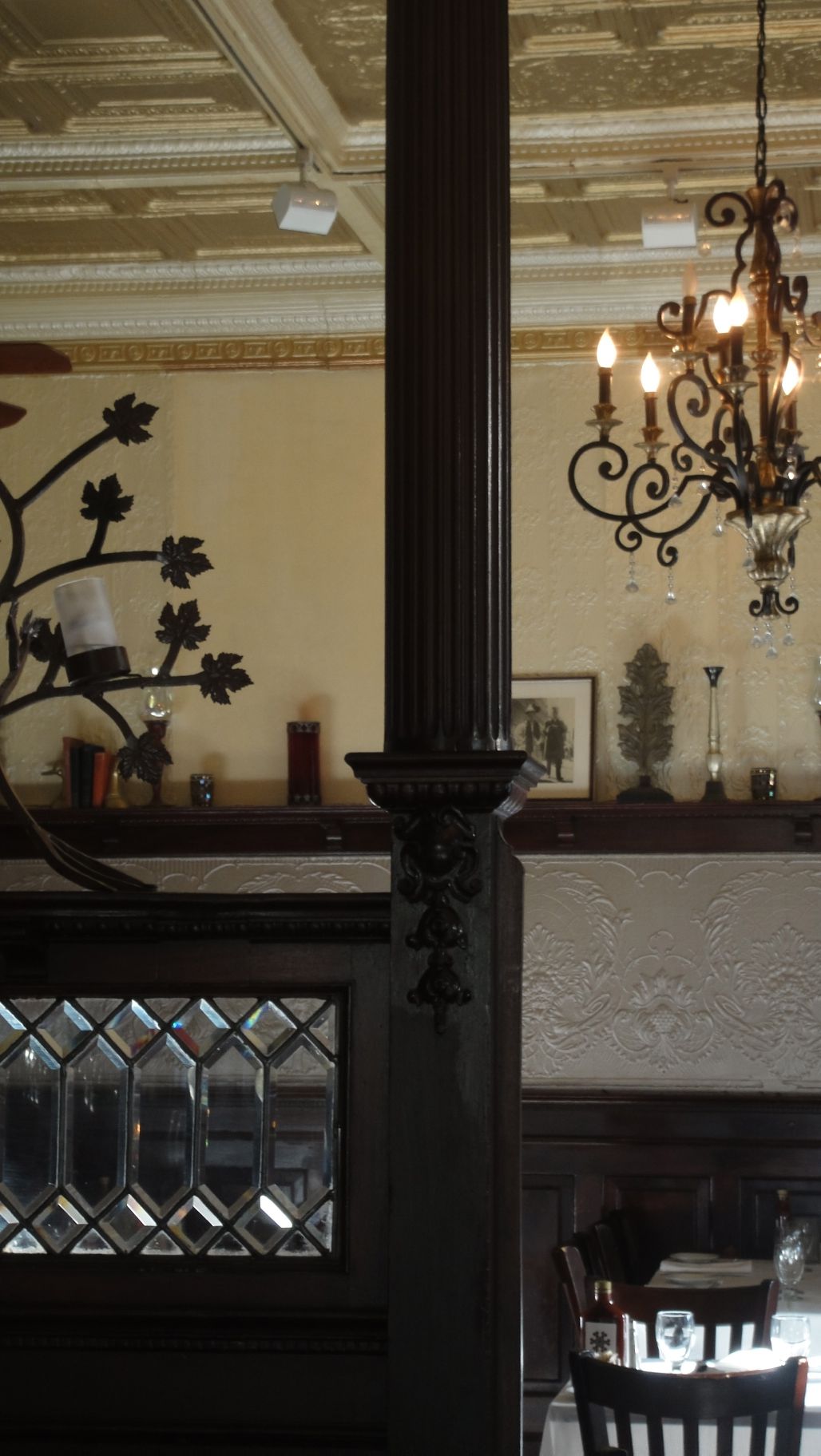Prologue
Our vision is affected by our experience. The tragedy of 9/11 is well documented and during this walk your own personal experience and the monuments themselves will serve as both teacher and guide. View the memorial and also walk the surrounding streets. Downtown is a work in progress filled with old survivors and new arrivals. This neighborhood embraces its wounds through rebirth. You will end your day looking out over the Hudson River whose magnitude and timeless currents will help to put the day in perspective.
The 9/11 Memorial is testament to how we process disaster and pain through art. Architectural design, selection and organization of exhibits, Spencer Finch's installation "Trying to Remember the Color of the Sky On That September Morning"; all involve reaction, vision and expression. This trip focuses on the transformation of experience through art.
expression of past pain
paintings of the world before 9/11...
Francisco Goya's "Cudgel Fight", John Singer Sargent's "Gassed", Naomi Natale's "One Million Bones", Winslow Homer's "The Veteran in a New Field" , Jamie Wardley and Andy Moss' "Fallen 9000"
War and violence are unfortunately part of the human condition. Examining these works; some permanent, some temporary, each artist is reaching out to connect with their public. Picasso once said
“What do you think an artist is? ...he is a political being, constantly aware of the heart breaking, passionate, or delightful things that happen in the world, shaping himself completely in their image. Painting is not done to decorate apartments. It is an instrument of war.”





poetry....
"...the lie of Authority
Whose buildings grope the sky:
There is no such thing as the State
And no one exists alone;
Hunger allows no choice
To the citizen or the police;
We must love one another or die..."
- W. H. Auden, "September 1, 1939"
the other 9/11...
when examining the past, it is essential to remember that pain is universal. Take a moment to read about the devastating impact of another September 11th, which took place in Chile, in the year 1973. Mel Chin's intense film "9/11-9/11", connects both September 11ths. This film's dark animation is another example of processing through personal artistic vision.
artistic visions of 9/11/2001
in music...
Springsteen's song 'The Rising' tells the story of a NYC firefighter climbing one of the World Trade Center Towers after they were hit.
animated memory...
Watch this animated version of retired firefighter John Vigiano's recorded memories of his two sons, a firefighter and a police office, both of whom died on 9/11. NPR's StoryCorps animated film won numerous awards.
photography & painting...
The photographs taken during 9/11 have defined the day in our memories. This iconic shot by Thomas Hoepker is just one example of how photographs can make us rethink reality and raise questions so effectively.
Compare the two art works below; "Blue Sky Day" by Kenneth Kaminski and Graydon Parrish's "The Cycle of Terror and Tragedy: September 11, 2001". Does the politicized nature of this tragedy affect the freedom that artists have to express themselves?


the art of the people & our community expression...
End the prologue by learning about the vernacular artistic responses to 9/11. In the PBS video below we listen to photographer Jonathan Hyman discuss his documentation of visual art produced in the communities around us.
Travelogue
Pack & Prepare
- in order to use the trip's interactive map and to take your own photos, make sure to bring a mobile device with internet capability.
- reserve tickets to the 9/11 museum tickets ahead of time (suggested time: 2pm).
- Go to the 9/11 memorial website and preview the suggested guide and mobile apps on your phone ahead of time.
- Trip Length: may vary according to the length of time spent at the memorial, approximately six hours - including lunch/dinner and visit. 3 miles.
1. in the 'eye' of the storm





“OCULUS
[ok-yuh-luh s]
noun, plural oculi [ok-yuh-lahy]
1. an eye.
2. Architecture. a circular opening, especially one at the apex of a dome.
3. Archaeology. a design representing an eye, as on funerary pottery found in megalithic tombs of Europe.
word origin: New Latin, Latin: eye”
- The Chambers Street/World Trade Center Subway Station (E Train: Church & Barclay Streets)
Greatly crippled by the 9/11 disaster, the NYC subway system was shut down within minutes of the first plane crash. Thousands of commuters passed through the Chambers Street E train station on their way to work that morning. Begin the afternoon by passing through that same station, instead of the newer alternatives. This stop is the site of the Oculus Art Installation which covers its interior. This 1998 work of art by Kristin Jones, Andrew Ginzel and Renaldo Piras, presents the eyes of 300 actual New Yorkers in beautiful mosaic form, scattered throughout the structure. Although damaged by the disaster, this amazing collection was successfully restored and, like the city of New York, it's a survivor. In an interesting coincidence, another important transportation hub nearby is called Oculus as well. Santiago Calatrava's controversial design for the new PATH station was inspired by a bird in flight, and the 'oculus' will be the puddled white marble floor of the main hall which is eye-like in design. The random synchronicity of name gives the word 'oculus' a special meaning. These very mosaic eyes watched disaster unfold on that morning long ago, and they have survived to watch you as you go up the stairs and begin your day.
2. The food of survival
- The StageDoor Deli (26 Vesey Street, between Broadway & Church)
Fortify yourself for the trip by stopping at this deli on Vesey Street and before entering for a quick bite, look at the above picture which was taken here on September 11th. Click on the photograph if you would like to read the story behind the image and then sit down and enjoy your food. Very few establishments managed to re-open in the aftermath of the disaster and while 9/11 is a tale of tragedy the endurance demonstrated by co-owner Pete Travlos is an inspiration. While this restaurant is not a monument, its continued presence is a monument to the bravery exhibited by many people in the face of adversity.
3. metamorphosis: from ground zero to memorial
- The 9/11 Memorial (200 Liberty Street, World Trade Center, NYC) suggested visit time, including museum - 3 hours
Leave the restaurant and walk west on Vesey Street entering the memorial on the West Street side. Initially ticketed, it is now open to the general public from 7:30-9, and is free to all. As you walk along Vesey, you will pass One World Trade Center (sometimes referred to as the 'Freedom Tower') as well as Calatrava's PATH train station.








This Memorial is built on a 16-acre park which consists of twin reflecting pools each of which sits on the site of one of the original World Trade Towers. The pools are framed by waterfalls as well as named memorial borders. The borders honor not only the people who died in New York, but also in Shanksville, PA, at the Pentagon and during the bombing of 1993. The names on these memorials are very effectively tied into the mobile apps offered on the 9/11 website and are organized carefully by panel. You may choose to use the apps to learn about specific individuals, or may simply choose to reflect in your own way. Notice that the surrounding park also houses 'The Survivor Tree'. This pear tree although initially severely damaged, was removed for rehabilitation and subsequently returned to the site in 2010 where it remains, still growing and alive.
The Memorial Museum is located next to the reflecting pools and costs $24 for general admission, except on Tuesdays, when access is free. It is strongly advised that you purchase your tickets ahead of time, so that you can schedule your day accordingly. The building is simultaneously a collection of artifacts, a history museum and a private remains repository for 9/11 family members. One could easily spend all day visiting this incredible institution, however we have allotted 2 - 2½ hours for your visit. Optimally, you might plan on visiting the museum a number of times for short periods of time, thus avoiding being overwhelmed by feelings and information overload.













4. The Economics of disaster
Part of any healing process involves moving forwards. The tragedy of 9/11 happened to the entire community of Lower Manhattan and a visit would not be complete without walking the streets and getting a feel for the neighborhood that surrounds the Memorial. Honor the old survivors and celebrate the new by enjoying the rest of your evening. Shop, walk, dine out and experience a living neighborhood - in spite of everything.
- Century 21 Store (22 Cortlandt Street) Exit the Memorial Park onto Church Street and Cortlandt, and there you'll find the queen of discount department stores, Century 21. This particular store opened in 1961 and still offers a unique brand of in-your face shopping. Although it can be crowded, shopping for deals can be rewarding, requiring the same tenacity and determination that the store itself demonstrated when it re-opened only six months after the disaster.
- Trinity Church (75 Broadway) This episcopal church established in 1697, survived September 11th, holding firm while others fell. Although it's organ was destroyed, the church itself provided refuge to many on that day and it's gates were the site of many moving offerings and remembrances. Take a moment to reflect quietly, or just enjoy how the age of the church contrasts so beautifully with the newer giants which surround it.
- Brookfield Place (200 Vesey Street) Previously called the World Financial Center, this upscale dining/shopping mall is a perfect example of this re-invigorated area. Site of a marina, a cooking school, a french culinary market place called 'Le District' , and an Atrium, Brookfield's development is attempting to target the downtown area as a premier retail destination. Relish the chrome and glass, the water views and the sense of movement and vigor that comes from one of our country's favorite past times - commerce, sweet commerce!
5. beauty and the blues




- Smith & Mills (71 N. Moore St) Move from the megalithic abundance of Brookfield to a secret place. Walk north to this tiny restaurant located in an old carriage house in TriBeCa and take refuge in its charm and gothic antique decor. Known for its mixed drinks and rustic european cuisine, it is the perfect contrast to the size and scope of the day. Sit back and order white wine steamed mussels, or drink a Dark & Stormy (a spicy mixture of rum and ginger beer). Its fine to have an early dinner, this place does not accept reservations and can be crowded unless you go during off hours. Watch the miraculous things a chef can do in its small kitchen behind the bar & then head out of the restaurant over to the Hudson River.
- Pier 25 (225 West St) Walk off your meal by crossing N. Moore over to Pier 25. Stroll along its length, past the mini-golf course and the playground, all the way to the end and stop to watch the water and look out over the New Jersey skyline. The current still flows and its strength is both impersonal and yet comforting at the same time. The perfect place to end this day.
Epilogue
“You must have chaos within you to give birth to a dancing star.”
Use art to reflect
Blues & silvers, feelings of stillness, of motion, of death and rebirth...all this remained with me after my trip downtown. What remained with you?
If the mood strikes you, take some time to express your experience artistically using any medium with which you are comfortable. Perhaps afterwards you will share your expression with the rest of us?





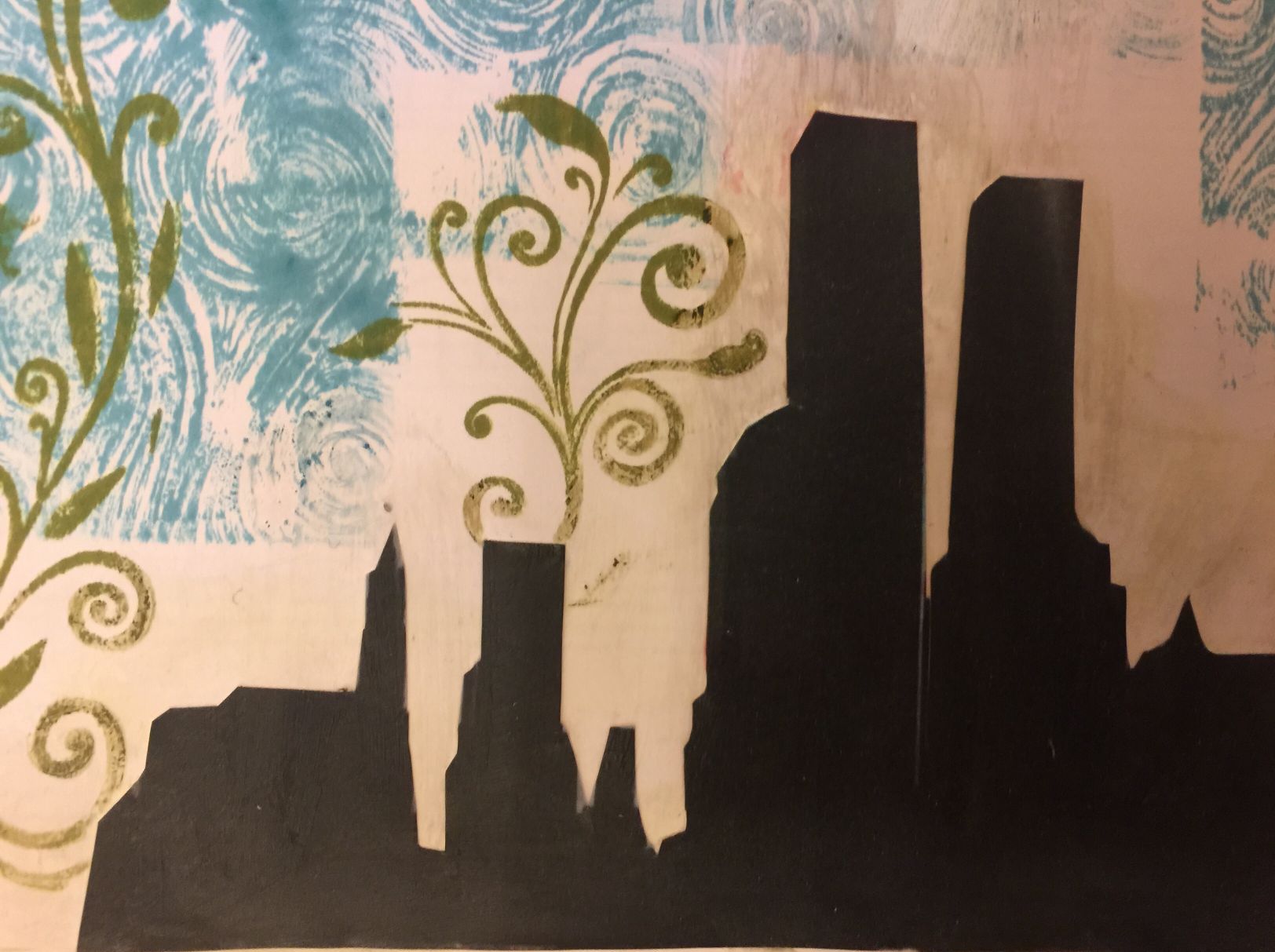
Blues and Greens - 9/11 by Alicé Montera - art journal
With respect and thanks to all who are affected by their own '9/11'.


























